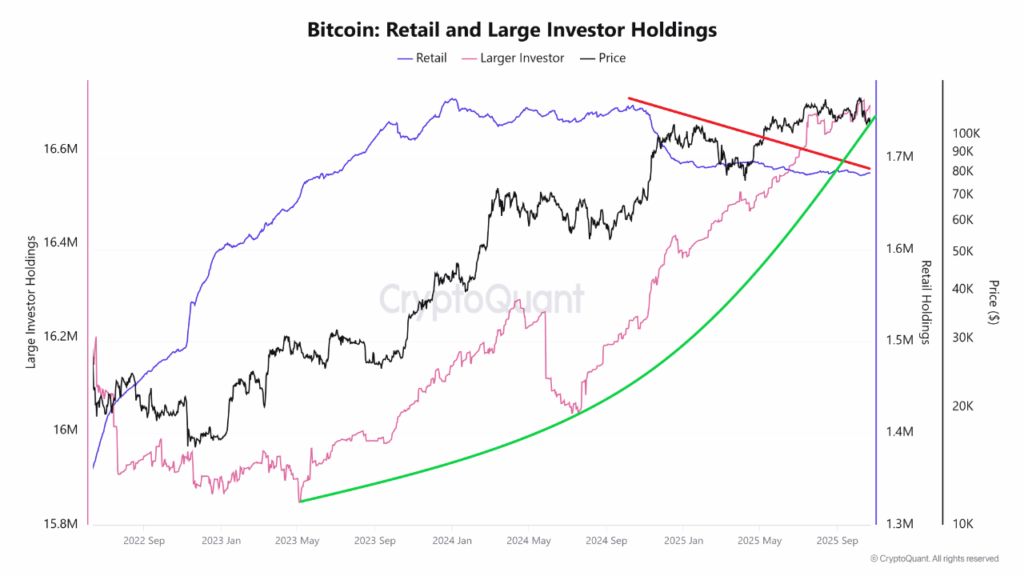- Large financial institutions, such as JPMorgan, are now accepting Bitcoin, which is a change in the structure where mainstream institutional acceptance is the new trend.
- Institutional accumulation will keep on getting better because the Bitcoin 4-Year cycles will move away the rallies that are driven by retail and turn to the long and stable investment environment.
- The trend in whale accumulation and inflows of ETFs indicate that Bitcoin is developing into a strategically operated and mature asset class.
Bitcoin’s 4-year cycles have long defined market behavior, from boom to correction. However, the current trend appears to diverge from the historical norm. Large investors are steadily accumulating Bitcoin while retail holders are selling during this evolving phase of the market.
Institutional Accumulation Signals a Structural Shift
Bitcoin’s 4-Year Cycles have traditionally been driven by retail enthusiasm, often peaking when small investors rushed in. This time, the trend appears reversed.Retail engagement is now more subdued as institutional buyers are building positions via ETFs and custodial methods.

Market data indicates that large wallets, mostly associated with corporations and investment capital, are still adding to their Bitcoin positions even as the market has ebbed and flowed in recent weeks.Historically, whales sold near price peaks, signaling market exhaustion. Today, the opposite pattern suggests a maturing asset class where strategic accumulation replaces speculative trading.
A tweet from crypto analyst @burakkesmeci stated, “Retail investors are selling, while large wallets keep accumulating.” This observation captures the shift in control, as long-term players now appear to influence Bitcoin’s trajectory more than ever before.
The Institutional Era Redefines Market Behavior
Institutional inflows have transformed Bitcoin’s 4-Year Cycles into a more stable accumulation phase rather than short-lived speculative runs. The introduction of Bitcoin ETFs has opened regulated pathways for large investors to enter the market with confidence and long-term strategies.
Even conventional banks are beginning to acknowledge Bitcoin’s evolving status. In an interesting change of tone, JPMorgan, a former vocal critic of cryptocurrencies, is now exhibiting a more solid beat, signifying broader acceptance in traditional finance. This is proof positive that Bitcoin is moving towards being a longer-term risk-off asset.
With rising institutional appetite for Bitcoin, the volatility may temper, with the different cyclical highs and lows we saw in cycles before becoming less harsh and more muted.With increased adoption among financial institutions, Bitcoin’s value proposition continues to evolve beyond its early speculative nature, aligning more closely with established investment frameworks.





